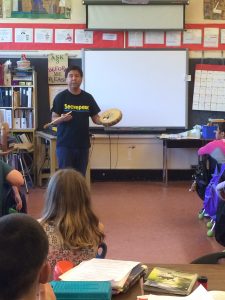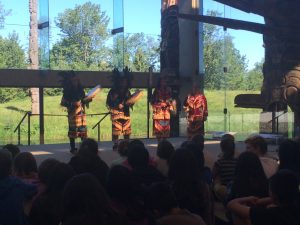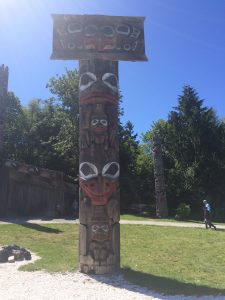I am half way through my practicum and suddenly realizing I should be documenting all the neat things I’m doing in my class, as well as everything I’m learning along the way! So, although a little late, here are the highlights from the first 5 weeks:
I began teaching Math the first week of practicum. As it is the subject I have been teaching for the longest and the most consistently (every morning 9:30-10:30), it is the subject I am feeling the most comfortable and confident with. I didn’t necessarily expect that! I enjoy Math, but I was slightly intimidated by the idea of teaching it. However, I learned so much from my students within that first week. I quickly realized the adjustments I needed to make based on their learning styles and needs. I have found numerous ways to gather formative assessment information in quick and fun ways that keep the kids engaged and accountable. For my upcoming unit in Math, my goal is to bring in more hands-on activities and more opportunities to be physically active during a lesson.
I started a unit on Francophone cultural communities for French that has been really fun. The students were super excited to hear about all the places in the world where people speak French. Now, they have formed groups and chosen a community they will research for a final project for this unit. I am assessing their oral abilities each lesson while they’re engaged in an activity. I find this has been helpful for students who are still quite uncomfortable attempting to speak in French in front of their peers.
In Science, I am teaching a unit on the Earth’s crust and plate tectonics. I’ve been using lots of video clips and animations to help students visualize these mind blowing concepts explaining what lies beneath our feet! I also like to spend a portion of each class encouraging students to ask questions about what they are learning. What do they wonder? I want to promote students’ natural curiosity and what better place to do so than in science class. My goal for the upcoming weeks is to find opportunities to bring students outside while they are learning about land formations caused by plate tectonics.
We have had a number of highly interesting, thought provoking and meaningful discussions in HACE so far. I taught a few lessons about body image in media. We spoke about stereotypes, photoshop, sexual objectification of men and women and how idealized body images affect our self esteem. I was incredibly impressed with the depth the students were able to take the discussion. They finished by making a collage of cut outs from magazines, which we then shared and added reflective responses to. I also taught a mini unit on peer pressure and how to say “no” assertively. After defining the necessary terms and discussing some examples of peer pressure situations, the students were given scenarios and came up with short skits to share with the class. Everyone was really committed to their characters and worked hard to find a respectful, yet assertive way of declining the offer they were given. There was even some improvisation that happened quite naturally, which allowed students to explore even deeper how it would feel to deal with these uncomfortable situations. I found this to be another exciting example of how using drama in the classroom can be incredibly effective for deepening student learning. I would like to find more ways to use drama, dance, music and art in my day to day classroom activities.



